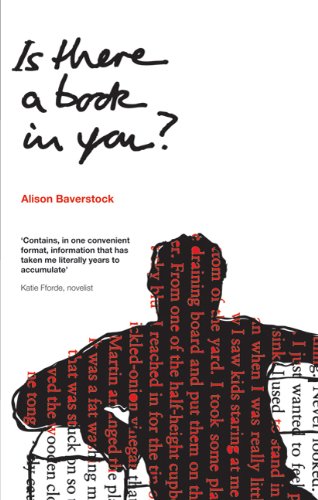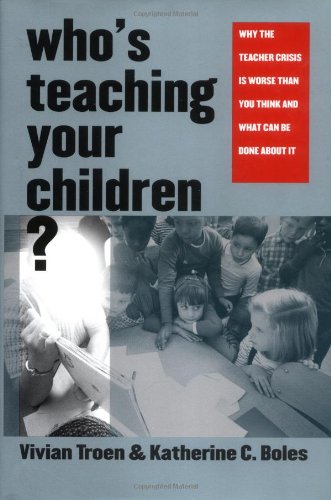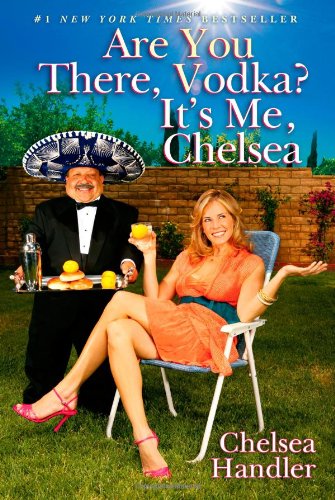موضوعات
آموزش و پرورش
ادبیات و زبان
پزشکی، دندانپزشکی و داروسازی
تاریخ و جغرافیا
داستان و رمان
دیگر
دین و فلسفه
روانشناسی
ریاضیات و آمار
سلامتی، تناسب اندام و رژیم غذایی
شیمی و پلیمر
علوم اجتماعی و حقوق
علوم زیستی و بیوتکنولوژی
فیزیک و نجوم
کامپیوتر و اینترنت
کتابهای کودکان و داستان
کسب و کار و اقتصاد
کشاورزی و دامپزشکی و غذا
معماری
مهندسی و فناوری
هنر و تئاتر
محصولات
The Day My Baby Was Born: The Joys, Wonders, and Surprises of the Day You'll Never Forget - PDF
نویسندگان: خلاصه: Inspiring Stories for Moms-to-Be | Real moms share their intimate birth stories Share in the beauty and wonder of the birth experience with this touching collection of true stories from 60 real moms, describing in their own words how their newborns came into the world. Their intimate recollections capture the remarkable range of birth experiences and remind us of the extraordinary bond that forms from this moment on. A great shower gift or self-purchase for expectant mothers that shares the amazing childbirth experience. Beautifully packaged to reflect the warmth, wonder, and mystery of the childbirth experience, The Day My Baby Was Born presents true stories from a wide variety of women about the different ways their child came into the world and the incredible bond this moment forms among all mothers.The Day My Baby Was Born gives moms-to-be a full sense of what to expect, through real stories from real people - the voices of friends, sisters, neighbors, and others sharing their own thoughts on the incredible moment. Featuring these stories: Birthing Iris: a slight deviation from the plan (Meredith Davis) Longer second labor, drug free (Laura Hubacek) Easy pregnancy and easy labor (Missy Bowen) My second baby was more difficult than my first (Allison McGee) Baby born on due date (Ally Channing) First baby born at home (Nancy Hatcher) The birth of my baby Carson (Brenda Allen) Our big surprise! (Trina Hollander) Jakson's birth story (Cristina Ramirez) Fast labor (Sara Hankes) Hurry up, Doc! (Harmony T) Extremely easy first delivery (Paige Nelson) My second birth just as wonderful as the first (Rachel R) A different water birth than expected (Erika Ginsberg-Klemmt) The birth of my angel Kylee Faith (Stephanie Wiseman) Thirty-two-week preemie after bed rest (Marsha Hammond) Too easy to be a first (Toni Williams) C-section wasn't as bad as I expected (Vickie Freeman) A not-so-scary birth story (Rebecca K) Miss Ashely's arrival (Carrie Herbst) Fast and furious first baby (Beth Johanson) My angel Madison (Candice Pesotini) Third time's the charm (Ann Larson) No progress results in Cesarean (Michelle Schroeder) My baby boy...easy birth and easy baby (Hope Lehmann) Jade's birth story (Sara A) Water birth was perfect (Kim Goodspeed) Pregnancy-induced hypertension with first (Shelly Evans) Baby Bre's story (Jennine Mustard) Intense back labor with no epidural (Katherine Harris) Difficult pregnancy but completely worth it (Anneli Nilsson) First baby born at thirty-six weeks, but so easy! (Lynda Lipske) That can't be right! (Kathy Colbern) Twin girls and a bonus (Liz Adams) Four weeks early and long labor (Brenda Erickson) I did it my way but almost didn't makee it (Melissa W) Baby girl born early (Stephanie Williamson) Quick for a first-time mom (Ilona Pope) Suzaan, our mircle (Martie van Biljon) My sweet (big) baby girl (Allie McDonaldson) Great expectations run amok (Rachel Karlsen) Sunny-side up, baby Braxton (Autumn Fagan) Easy as 1-2-3 (Emily O'Reilly) The longest labor but well worth it (Cara Martin) My drug-free birth (Sheldene Wade) Come on, baby! (Lindsay A.E.) Fintan's birth story (Jessica Aldridge) Seven days late with 7 pound, 7 ounce girl (Lisa Patterson) Speedy first labor and delivery (Robyn Cassidy) Eyes wide open (Erika Starman) Seven-hour labor, one week late and all natural (Darlene Fulton) Overdue water birth at home (Kerri Connell) Long labor but easy delivery (Bonnie Wenzel) An unexpected delivery at home (Kris Krynicki) I loved my fast and easy delivery with Pitocin (Allison McGreger) Night of the full moon (Aimee Wimbush-Bourque) Lamaze teacher gives birth (Christine Hughes) The grand entrance of the second man in my life (Jennie C)Once You Go Black: Choice, Desire, and the Black American Intellectual (Sexual Cultures) - PDF
نویسندگان: خلاصه: 2007 Lambda Literary Award Finalist, LGBT StudiesRichard Wright. Ralph Ellison. James Baldwin. Literary and cultural critic Robert Reid-Pharr asserts that these and other post-World War II intellectuals announced the very themes of race, gender, and sexuality with which so many contemporary critics are now engaged. While at its most elemental Once You Go Black is an homage to these thinkers, it is at the same time a reconsideration of black Americans as agents, and not simply products, of history. Reid-Pharr contends that our current notions of black American identity are not inevitable, nor have they simply been forced onto the black community. Instead, he argues, black American intellectuals have actively chosen the identity schemes that seem to us so natural today.Turning first to the late and relatively obscure novels of Wright, Ellison, and Baldwin, Reid-Pharr suggests that each of these authors rejects the idea of the black as innocent. Instead they insisted upon the responsibility of all citizens—even the most oppressed—within modern society. Reid-Pharr then examines a number of responses to this presumed erosion of black innocence, paying particular attention to articulations of black masculinity by Huey Newton, one of the two founders of the Black Panther Party, and Melvin Van Peebles, director of the classic film Sweet Sweetback’s Baadasssss Song.Shuttling between queer theory, intellectual history, literary close readings, and autobiography, Once You Go Black is an impassioned, eloquent, and elegant call to bring the language of choice into the study of black American literature and culture. At the same time, it represents a hard-headed rejection of the presumed inevitability of what Reid-Pharr names racial desire in the production of either culture or cultural studies.Homebuyers Beware: Who's Ripping You Off Now?--What You Must Know About the New Rules of Mortgage and Credit - PDF
نویسندگان: خلاصه: “Carolyn Warren is my go-to expert for mortgage industry information. She not only helps you avoid rip-offs, she helps you know what questions to ask and how to ask them. Full of tips, scripts, and sample letters, Homebuyers Beware is an extremely valuable book that I recommend to all my readers!” --Alison Rogers, “Ask the Agent” columnist, CBS Moneywatch.com “In this fun-to-read volume, mortgage industry insider Carolyn Warren tells you what real estate cheats and mortgage scammers do NOT want you to know: the tricks, the deceptions, and the outright frauds that would otherwise add thousands, maybe tens of thousands of dollars to your mortgage. Get it. Read it. And take it to the mortgage broker with you. You’ll be glad you did!” --Clayton Makepeace, The Total Package, Makepeacetotalpackage.com “In Homebuyers Beware, Carolyn Warren directs her keen eye at the mortgage and credit markets in the wake of the housing bubble. With an insider’s knowledge, plenty of interesting anecdotes, and helpful reference information, Warren is a cheerful teacher leading readers down the path to homeownership and pointing out pitfalls along the way.” --Ben Meyer, InternetBrands.com Get the Best Mortgage Deal in Today’s Real Estate Markets--and Avoid a Whole New Generation of Scams! Exposes new secrets, lies, and scams the mortgage industry doesn’t want you to know about Reveals how to save thousands right now by finding the best rate and negotiating the best deal Guides you step-by-step through improving your credit and preparing to buy, even if you’ve faced foreclosure Everything you thought you knew about financing a house has changed. Your future depends on knowing today’s mortgage and credit realities: Relying on older information could cost you a fortune or keep you from buying a house altogether. In Homebuyers Beware, Carolyn Warren reveals the new realities of home financing and shows exactly how to take advantage of them, whether you’re buying your first home, refinancing, struggling with imperfect credit, or planning to invest in real estate. Homebuyers Beware reveals new secrets homebuyers simply can’t afford to miss and exposes new scams that target today’s eager consumers--including new loans that look great on paper but are every bit as dangerous as yesterday’s subprimes. Unlike other mortgage guides, this book fully reflects today’s radically new mortgage requirements, in addition to the latest federal housing legislation and how to improve your credit rating. From its up-to-the-minute guidance on real estate negotiation to its powerful tips on getting lower interest rates and avoiding bogus junk fees, this may be the most valuable book you ever read! Who’s ripping you off nowHigh-tech “smoke and mirrors” that can trick you into overpaying Quick, easy, powerful ways to fix your creditInnovative ways to raise your credit score or recover from a foreclosure or short sale Uncovering the costly secrets of the Yield Spread PremiumGet past your banker’s lies, learn the truth, and save a fortune The latest laws and credit rules and what they mean to youSo-called anti-predatory laws and codes of conduct actually hurt homebuyers. Learn what you can do to protect yourself from big corporation greed. New plans for recovering from bad credit, foreclosures, or short sales Step-by-step techniques that erase bad credit and raise your credit score faster than you ever thought possible. Learn how to recover from a foreclosureLiving Well with Chronic Fatigue Syndrome and Fibromyalgia: What Your Doctor Doesn't Tell You...That You Need to Know - PDF
نویسندگان: خلاصه: From the author of Living Well With Hypothyroidism, a comprehensive guide to the diagnosis and treatment of chronic fatigue syndrome and fibromyalgia--vital help for the millions of people suffering from pain, fatigue, and sleep problems. Recent studies indicate that 3 to 6 million Americans suffer from fibromyalgia--a chronic disorder characterized by widespread musculoskeletal pain, fatigue, and multiple tender points. This terrible condition is often accompanied by chronic fatigue syndrome, a persistent and debilitating sense of exhaustion that is estimated to affect 800,000 Americans--twice the number of people with multiple sclerosis. Yet there are no official blood tests of diagnostic procedures that can confirm that yes, you definitely have these conditions, and in fact, a whole segment of the medical world doesn't even believe these two diseases actually exist. In addition, the few books that are on the market tend to focus on single solutions or eschew conventional and pharmaceutical approaches, which could alienate readers who use conventional medicine in whole or part. In her trademark accessible, easy-to-follow style, patient advocate Mary J. Shomon integrates the latest findings regarding these misunderstood conditions. Highlighting the pros and cons of the antibiotic, metabolic/endocrine, hormonal, musculoskeletal, and many other approaches to treatment, Shomon explores the fads and viable alternatives--both conventional and alternative--and provides helpful, clear solutions to help sufferers of fibromyalgia and chronic fatigue syndrome. At various points since 1995, Mary J. Shomon has been diagnosed with chronic fatigue syndrome and fibromyalgia. Since then, she has transformed her health challenges into a mission as a nationally-known patient advocate. She has worked for more than 20 years in writing, advertising, public relations, and communications and is the founder and editor-in-chief of several thyroid, autoimmune, and nutrition newsletters, as well as the internet's most popular thyroid disease website, www.thyroid-info.com.Is There a Book in You? - PDF
نویسندگان: خلاصه: Many people feel they might have a book in them - but how do you know whether you have what it takes to be a writer, whether your writing is any good, what you should write about and whether you should dedicate proper time to begin your dream? This book asks pertinent questions of you via a questionnaire to help you discover whether there is a talented writer in you. Each chapter provides background to the relevant point in the questionnaire. Packed with advice from experienced writers including known authors; P D James, Philip Pullman, Jacqueline Wilson, Margaret Drabble, Katie Fforde and more. Expert advice from Daniel Roche (BA President), independent booksellers, publishers Helen Fraser (Penguin) and Ian Trewin (Chairman Cheltenham Literary Festival and administrator, Man Booker Prize), agents and creative writing tutors. Foreword by columnist and writer Katharine Whitehorn.Vanity, Vitality, and Virility: The Science behind the Products You Love to Buy - PDF
نویسندگان: خلاصه: What is the secret of shower cleaners? How does the dangerous explosive nitroglycerin ward off heart attacks? And what medicines, usually prescribed for other purposes, are said to produce the ultimate orgasm? In Vanity, Vitality, and Virility, award-winning science writer John Emsley offers a fascinating behind-the-scenes account of 30 chemicals that we use everyday to make ourselves more beautiful, to improve our diet and sexual pleasure, to kill germs, and to ward off depression and other mental illnesses. Emsley looks at common compounds such as alpha-hydroxy acids, vitamin C, chlorine bleach, and Prozac, telling us if they work, how they work, and how they were discovered. Indeed, the book is packed with useful information and easy-to-digest science, and Emsley relates it all with a light touch that delights in the odd fact or amusing anecdote. Thus we learn of the "vitamin C tights" sold in Japan to make your legs more beautiful (they don't work) and of the whimsical Hungarian scientist who first isolated vitamin C and wanted to name it "godnose"--because he had no idea what the compound was. We discover that Cleopatra was right to bath in milk, which is filled with alpha-hydroxy acids. And we read about the unforgettable British researcher who demonstrated a powerful new drug for male erections at a Las Vegas convention--injecting himself with the compound and then "displaying the results" to a stunned lecture hall. As with the much-loved Nature's Building Blocks, in John Emsley's hands, chemistry comes alive. Anyone curious about the ingredients in the products we use, and everyone fascinated with science, will be enthralled by this book.Living Rich by Spending Smart: How to Get More of What You Really Want - PDF
نویسندگان: خلاصه: “After 21 years of giving advice about your wallet on the radio, I thought I had heard it all and read it all. Then I read Living Rich by Spending Smart. Greg Karp has a clear roadmap to wealth that is yours for the taking. Follow his simple steps and you will take control of your financial future. Get FIT now!” –Clark Howard, The Clark Howard radio show “The book is full of practical information for trimming and redeploying spending, which is often given short shrift in other personal finance books. The author provides solid advice and solid writing on a topic that benefits from a fresh voice.” –Liz Pulliam Weston, MSN Money columnist and author of Easy Money “Greg Karp offers well-researched, practical strategies that can help anyone save big money on everyday expenses, and his entertaining writing style makes the book a fun read.” –Stephanie Nelson, editor of CouponMom.com and frequent guest on ABC-TV’s Good Morning America “Greg Karp gets it and you will too. His research and tips will help you keep more of the money you earn. Reading Living Rich by Spending Smart is the best way to give yourself a raise.” –Steve & Annette Economides, New York Times Best-Selling Authors of America’s Cheapest Family Gets You Right On The Money “Wise people have always known it. Now Greg Karp lets everyone in on the secret. The surest way to living well is to manage your spending. Living Rich by Spending Smart is a simple roadmap that anyone can follow. And should!” –Gary Foreman, editor of TheDollarStretcher.com “For every consumer who consistently fails to engage brain before operating pocketbook, this book provides simple, concrete steps to immediately take control of your spending.” –Edgar Dworsky, founder of ConsumerWorld.org As The Millionaire Next Door revealed, building wealth isn’t just about working harder or what you choose to invest in: it’s about spending smarter. Now, award-winning Tribune Company personal finance columnist Gregory Karp shows how to do just that. This book isn’t about depriving yourself. Instead, Gregory Karp shows how to build real, long-lasting wealth by plugging the money leaks you’re barely aware of and making sure you spend with a purpose. Karp’s surprisingly painless techniques will help you eliminate wasteful spending in every area of your financial life. You’ll discover how to focus spending on what you really care about...spend less on gifts without becoming a cheapskate...slash your phone bill...pay less for food and still eat what you want...eliminate spending leaks in insurance, education, even entertainment. From the clothes you wear to the cars you drive, this book will help you build a life that’s truly rich because it’s truly financially secure. •Smart people, dumb spendingWhy you need to fire the accountant in your head •What a waste From inkjet cartridges to extended warranties •Achieving money victory: short-term tactics, long-term strategies Win today’s retail skirmishes (and your lifelong money wars) •How to pay less for the same entertainment ...without having less fun • Why comparison shopping is more profitable than you thought Surprise: it’s worth your timeWho's Teaching Your Children?: Why the Teacher Crisis Is Worse Than You Think and What Can Be Done About It - PDF
نویسندگان: خلاصه: Many of the problems afflicting American education are the result of a critical shortage of qualified teachers in the classrooms. The teacher crisis is surprisingly resistant to reforms and is getting worse. This analysis of the causes underlying the crisis seeks to offer concrete, affordable proposals for effective reform. Vivian Troen and Katherine Boles, two experienced classroom teachers and education consultants, argue that because teachers are recruited from a pool of underqualified candidates, given inadequate preparation, and dropped into a culture of isolation without mentoring, support, or incentives for excellence, they are programmed to fail. Half quit within their first five years. Troen and Boles offer an alternative, a model of reform they call the Millennium School, which changes the way teachers work and improves the quality of their teaching. When teaching becomes a real profession, they contend, more academically able people will be drawn into it, colleges will be forced to improve the quality of their education, and better-prepared teachers will enter the classroom and improve the profession.Quicksilver: A Revolutionary Way to Lead the Many and the Few -- Beginning with YOU - PDF
نویسندگان: خلاصه: Are you dangerously normal? Most of the world's catastrophes don't come from mistakes. Wars, NASA space tragedies, global economic meltdowns all have one thing in common they are caused by normal thinking. Quicksilver shows that humanity now suffers from a learning disorder that threatens our future. As a result, leaders must develop a shape-shifting ability to continuously adjust themselves and their organizations to quicksilver conditions. The book looks at the failed leadership behind the 2008 economic crisis from the perspective of the fast-changing digital world, which has outpaced habits of mind. It focuses on cognitive psychology and proposes a set of practices aimed at coping with problems of the digital age. We are all leaders. Quicksilver will teach you how to inoculate yourself against self-defeating, normal thinking, and systematically neutralize fear, which comes in many guises. Be a leader with the personal courage and integrity that people will want to follow.Are You There, Vodka? It's Me, Chelsea - PDF
نویسندگان: خلاصه: Chelsea Handler is a woman on a mission. She's smart, sassy and not afraid to speak her mind. From an early age Chelsea knew exactly what she wanted and even in the trickiest of situations, she's never one to pass up an opportunity. Like the time she convinced her third-grade class she was shooting movies with Goldie Hawn on location in the Galapagos just to get them to like her, or when she spent the night in a women's prison, contemplating an affair with the inmate who killed her own sister. Chelsea it seems, has done it all, and a whole lot more...Any mishaps along the way just spur Chelsea on further. Whether she is being dry-humped by a sumo masseur, dumped by her Big Red experiment or kicked out of a London restaurant with her pants down, Chelsea is always armed with an unshakable disregard for rules and is incapable of leading a quiet life. "Are You There Vodka? It's Me, Chelsea" is an entertaining memoir-in-stories that will have you rolling around with laughter.آیا کتاب مورد نظر هنوز بر روی سایت قرار نگرفته است؟ جای نگرانی نیست! کافی است بر روی گزینه سفارش کتاب کلیک کرده و درخواست خود را ثبت کنید. در کمتر از چند ساعت کتاب شما را آماده خواهیم کرد.









